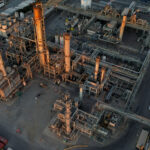Newly completed factory will produce and launch up to 100,000 seven-ounce satellites a year at its Midland space facility, schedules first launches for 2019
From Engineering.com
A new satellite factory has opened in the heart of Texas—and it promises to revolutionize satellite production.
AST&Science will manufacture its Micron LEO satellites at the Midland International Air and Spaceport. The company expects to invest $30 million in the 85,000 square foot facility, which will also create 160 high-tech jobs. It will also move its corporate headquarters from Miami, Florida to Midland.
Construction of the facility is complete, and the company aims to start producing the Microns shortly—the first satellites will be launched for orbital tests in 2019.
Midland is the first airport with regular air passenger service in the United States to be certified by the FAA as a spaceport—meaning it will be able to host aircraft and spacecraft.
The factory will be used to design, build and test the company’s Micron ultra-small satellites. The Micron weighs just seven ounces and is designed to work in concert with larger satellites. And being located at a functional spaceport, the Microns will be launched on-site in volume.
The company’s patented modular technology will make it possible to mass-produce the Microns—up to 100,000 a year at the new factory. The manufacturing process would allow the satellites to be customized to provide a broad range of commercial and defense uses. Commercial technological advancements can be implemented much quicker with small satellites, which can bypass the lengthy years-long building times of conventional satellites. And from a military perspective, swarms of small satellites are much harder to target than the hulking military satellites currently in orbit.
Having the capacity to build them in such volume offers “the lowest cost per radiated kilowatt and the largest system gains and spectrum reuse ever achieved in the industry,” according to a company news release.
“Our revolutionary technology will change the way satellites are manufactured, launched and used in space and on Earth. From Midland, we will scale up quickly to produce high quantities of low-cost, ultra-powerful LEO satellite platforms,” said Abel Avellan, AST&Science’s Chairman and CEO. “This will open up an astonishing range of commercial and defense applications not previously possible with traditional satellite manufacturing techniques.”
This move will be a real boost for the spaceport. Its previous high-profile tenants both closed down: XCOR Aerospace was developing its Lynx rocket plane for suborbital passenger flights, and Orbital Outfitters was developing spacesuits for XCOR.
Not only does AST&Science’s commitment revitalize Midland, it also promises to be a transformative force in the satellite manufacturing sector.
“I believe that ultimately, many of the very large satellites that weigh a ton… will be displaced by small, powerful, mini satellites in much the same way as a significant amount of data processing has moved to small, powerful computers,” said Avellan in an interview.







